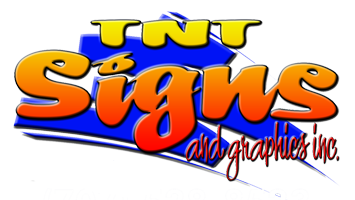Introduction
Hello from TNT Signs! Effective signage is a powerful tool for any business, enhancing brand visibility, attracting customers, and driving sales. But how do you know if your signage is truly delivering results? Measuring the effectiveness of your signage is crucial to ensure that your investment is paying off and to make informed decisions about future marketing efforts. In this blog, we’ll explore various methods and metrics for evaluating the effectiveness of your signage, including foot traffic analysis, sales data, and customer feedback.
Why Measuring Signage Effectiveness Matters
Understanding how well your signage performs can help you:
- Optimize Marketing Strategies: Make data-driven decisions to improve the impact of your signage.
- Maximize ROI: Ensure that your investment in signage delivers the best possible return.
- Enhance Customer Experience: Tailor your signage to better meet customer needs and preferences.
Methods for Measuring Signage Effectiveness
Foot Traffic Analysis
Foot traffic analysis involves tracking the number of people who visit your business location, allowing you to gauge the visibility and attractiveness of your signage.
How to Measure Foot Traffic:
- Manual Counting: Assign staff to count the number of visitors during specific times.
- Automated Counters: Use electronic foot traffic counters installed at entry points.
- CCTV Analysis: Review surveillance footage to estimate visitor numbers.
Example: A retail store installs foot traffic counters at the entrance to measure the increase in visitors after installing a new promotional banner.
Sales Data
Sales data provides direct insight into how signage impacts your business’s bottom line. By comparing sales figures before and after the introduction of new signage, you can assess its effectiveness.
How to Use Sales Data:
- Compare Time Periods: Analyze sales data from periods before and after the signage installation.
- Promotional Tracking: Track sales data for specific promotions advertised through your signage.
- Product Sales: Monitor sales of products highlighted by point-of-purchase (POP) displays.
Example: A restaurant tracks the sales of a new menu item featured on a digital menu board to see if the signage boosts orders.
Customer Feedback
Customer feedback provides qualitative insights into how well your signage resonates with your audience. Gather feedback directly from customers to understand their perceptions and reactions.
How to Gather Customer Feedback:
- Surveys and Questionnaires: Distribute surveys in-store or online asking customers about their impressions of your signage.
- Comment Boxes: Place comment boxes in-store for customers to leave feedback.
- Direct Interactions: Encourage staff to ask customers about their thoughts on the signage during interactions.
Example: A gym hands out a survey asking members if the new motivational wall graphics enhance their workout experience.
A/B Testing
A/B testing involves comparing two different versions of signage to determine which one performs better. This method allows you to make data-driven decisions about design and content.
How to Conduct A/B Testing:
- Design Variations: Create two versions of a sign with different designs, messages, or placements.
- Split Testing: Display each version to separate groups of customers and measure the responses.
- Analyze Results: Compare metrics such as foot traffic, sales, and customer feedback for each version.
Example: A car dealership tests two different promotional banners to see which one attracts more visitors and leads to more test drives.
Digital Signage Analytics
Digital signage offers advanced analytics capabilities, providing detailed data on how customers interact with your signs.
Key Metrics for Digital Signage:
- Viewership: Track how many people view your digital signs.
- Engagement: Measure interactions with interactive digital signs, such as touchscreens or QR code scans.
- Dwell Time: Monitor how long customers spend viewing or interacting with your signs.
Example: A retail store uses digital signage analytics to measure how many customers engage with an interactive product display, helping to refine content for better engagement.
Social Media and Online Metrics
For businesses that use signage to promote social media handles or websites, online metrics can provide additional insights into effectiveness.
How to Track Online Metrics:
- Web Traffic: Monitor website traffic and identify spikes after new signage is installed.
- Social Media Engagement: Track mentions, likes, shares, and follows related to your signage.
- Online Reviews: Pay attention to reviews and comments that mention your signage.
Example: A café promotes its Instagram handle on its outdoor signage and tracks the increase in followers and engagement on the platform.
Implementing and Analyzing Metrics
Once you’ve gathered data using the methods above, it’s important to analyze the results to draw meaningful conclusions and make informed decisions.
Steps for Effective Analysis:
-
- Collect Data: Use a combination of the methods outlined to gather comprehensive data.
- Compare Periods: Look at data from before and after signage installation to identify trends and impacts.
- Identify Patterns: Look for patterns and correlations between signage changes and business performance metrics.
- Adjust Strategies: Use insights gained to refine your signage strategies for better results.
Example: A health clinic collects foot traffic, sales data, and customer feedback for a month after installing new directional signs. They find a significant increase in new patient visits and positive comments about ease of navigation.
Continuous Improvement
Measuring the effectiveness of your signage is not a one-time task. It requires continuous monitoring and adjustment to ensure that your signage remains relevant and effective.
Tips for Continuous Improvement:
- Regular Reviews: Schedule regular reviews of your signage performance metrics.
- Stay Updated: Keep up with the latest signage trends and technologies.
- Iterative Testing: Continuously test and refine your signage based on data and feedback.
Example: A retail chain schedules quarterly reviews of all store signage, making adjustments based on the latest data and seasonal trends.
Conclusion
Measuring the effectiveness of your signage is essential for optimizing your marketing efforts and maximizing return on investment. By using foot traffic analysis, sales data, customer feedback, A/B testing, digital signage analytics, and online metrics, you can gain a comprehensive understanding of how your signs perform and make data-driven decisions to enhance their impact. At TNT Signs, we’re here to help you create and evaluate effective signage that drives results. Contact us today to learn more about our custom signage solutions and how we can help you measure and improve your signage effectiveness.



